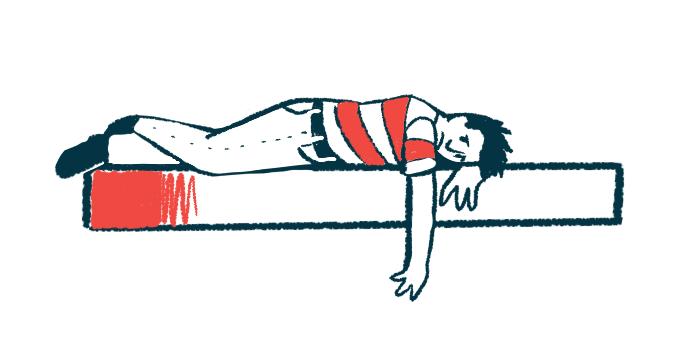Quality of Life, Social Interactions Affected by Hypermobility: Study
People with hypermobile joints and chronic pain participate less in social activities
Written by |

People with hypermobile joints participate less in social activities due to chronic pain, according to a recent study that compared patients with hypermobile Ehlers-Danlos syndrome (hEDS) or hypermobility spectrum disorder (HSD) with those with classical and vascular forms of the disorder.
“The results of the present study demonstrate that patients with EDS and HSD are limited in performing everyday activities, need guidance and support from a multidisciplinary team to improve their symptoms, as well [as] advice regarding adapted employment and sports, and help to select adequate functional aids in daily life,” the researchers wrote.
The study, “Societal participation in ehlers-danlos syndromes and hypermobility spectrum disorder, compared to fibromyalgia and healthy controls,” was published in the journal PLOS ONE.
EDS is an umbrella term for several connective tissue disorders caused by a defect in the production of collagen — a vital protein that makes up skin, joints, and ligaments. As a result, many patients experience symptoms such as hypermobile joints and fragile skin. Recurrent joint dislocations, chronic joint pain, muscle weakness, extreme tiredness, and easy bruising, are also reported often.
The most common EDS types are hypermobile, classical (cEDS), and vascular (vEDS). While cEDS and vEDS are known to be caused by genetic mutations, the mutations that lead to hEDS have yet to be identified in most cases. Therefore, diagnosis of hEDS is dependent on specific clinical criteria that have since been updated in 2017. People are diagnosed with HSD when they have joint hypermobility but do not fulfil all hEDS criteria.
Although patients with HSD have fewer signs of skin, soft tissue, and skeletal problems compared with hEDS, both conditions are associated with difficulties in performing activities of daily living and a reduced quality of life.
In the study, researchers at Ghent University in Belgium set out to compare the level of participation in society between people with hEDS, cEDS, vEDS, and HSD, and healthy controls. They also looked at the differences between patients with EDS and those with a clinically similar but more common condition called fibromyalgia.
Recruited patients were asked to complete a survey called the Ghent Participation Scale to assess their social participation. In this test, higher scores indicate greater perceived participation. The test is also divided into three subscales, which includes subscale one: “Self-performed activities in accordance with personal choices and wishes,” subscale two: “Self-performed activities leading to appreciation and social acceptance,” and subscale three: “Delegated activities.”
A total of 69 EDS patients, 69 healthy people matched by age and sex, and 69 fibromyalgia patients were included in the study. The overall mean age was 41 years and 78.7% of the participants were women.
For analysis, HSD and hEDS patients were combined as one group since their clinical symptoms are closely related. The researchers also grouped together cEDS and vEDS patients to increase the sample size.
The findings showed that people with hEDS/HSD had a significantly lower participation score compared to the control group (44.58 vs. 55.66). Additionally, the participation scores for self-performed activities were also significantly lower for hEDS/HSD participants (54.80 vs. 60.74), as well as the participation scores for delegated activities (38.76 vs. 57.94).
“Severe joint problems in people with hEDS and HSD appear to lead to chronic pain in daily life, which may explain the reported lower level of participation,” the investigators wrote.
hEDS/HSD patients had a lower overall participation score compared to participants in the cEDS/vEDS group (44.58 vs. 52.20). Additionally, participation scores for delegated activities were also lower in hEDS/HSD patients compared to cEDS/vEDS patients (38.76 vs. 51.30).
However, cEDS/vEDS patients did not have a different level of participation for the overall participation score, the self-performed activities, and the score for delegated activities, compared with healthy controls or patients with fibromyalgia.
To explain these results, the researchers suggested that cEDS/vEDS patients possibly go to greater lengths to participate despite their symptoms, or that they have better coping strategies for their pain.
“EDS has a major influence on the daily functioning of the participants, which may be reflected in a multitude of consequences that the disorder exerts in a patient’s life,” the researchers wrote.
They added that additional studies are required to validate these findings: “In this way, interventions can be set up for patients with EDS in an evidence-based way and that are appropriate to the patient’s level of participation.”







